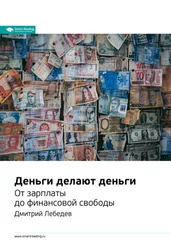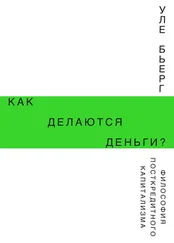Lacan J. ‘Seminar on «The Purloined Letter»’ // Lacan J. Écrits: The First Complete Edition in English, translated by B. Fink, 6–48. New York: W.W. Norton & Co, 2007.
Lawson Tony. ‘The Current Economic Crisis: Its Nature and the Course of Academic Economics’. Cambridge Journal of Economics 33, No. 4 (2009): 759–777.
–. ‘The Nature of Heterodox Economics’ // Cambridge Journal of Economics 30, No. 4 (2006): 483–505.
Lerner Abba P. ‘Money as a Creature of the State’ // The American Economic Review 37, No. 2 (1947): 312–317.
LiPuma Edward and Lee Benjamin. Financial Derivatives and the Globalization of Risk . Durham: Duke University Press, 2004.
MacKenzie Donald A. An Engine, Not a Camera: How Financial Models Shape Markets . Cambridge MA: MIT Press, 2006.
Malkiel Burton G. A Random Walk Down Wall Street. New York: W.W. Norton & Company, 1973.
Mallaby Sebastian. More Money Than God: Hedge Funds and the Making of a New Elite . New York: Penguin, 2011.
Mandelbrot Benoit and Hudson Richard. The (Mis)Behaviour of Markets . New York: Basic Books, 2004.
Markowitz Harry. ‘Portfolio Selection’ // Journal of Finance 7, No. 1 (1952): 77–91.
McKenzie Rex A. ‘Casino Capitalism with Derivatives: Fragility and Instability in Contemporary Finance’ // Review of Radical Political Economics 43, No. 2 (2011): 198–215.
Merton Robert C. ‘Theory of Rational Option Pricing’// The Bell Journal of Economics and Management Science 4, No. 1 (1973): 141–183.
Mirowski Philip. More Heat than Light: Economics as Social Physics, Physics as Nature’s Economics . Cambridge: Cambridge University Press, 1989.
Mitchell-Innes A. ‘Credit Theory of Money’// The Banking Law Journal 31 (1914): 151.
–. ‘What Is Money?’// The Banking Law Journal 30 (1913): 377.
Mosler Warren. ‘Full Employment and Price Stability’ // Journal of Post Keynesian Economics 20, No. 2 (1997): 167–182.
Neumann John and Morgenstern Oskar. Theory of Games and Economic Behavior . Princeton: Princeton University Press, 1944.
Nørretranders Tor. Det udelelige: Niels Bohrs aktualitet i fysik, mystik og politik . Copenhagen: Gyldendal, 1985.
Parguez A. and Seccareccia M. ‘The Credit Theory of Money: The Monetary Circuit Approach’ // What Is Money? , edited by John Smithin, 101–123. London: Routledge, 2000.
Pryke Michael and Allen John. ‘Monetized time-space: derivatives – money’s new imaginary’?’ // Economy and Society 29, No. 2 (2000): 264–284.
Rhea Robert. The Dow theory: an explanation of its development and an attempt to define its usefulness as an aid in speculation . Flint Hill: Fraser, 1932.
Ryan-Collins J. et al. Where Does Money Come From?: A Guide to the UK Monetary and Banking System. London: New Economics Foundation, 2011.
Samuelson Paul. ‘Proof that Properly Anticipated Prices Fluctuate Randomly’ // Management Review 6, No. 2 (1965): 41–49.
Seaford Richard. Money and the Early Greek Mind: Homer, Philosophy, Tragedy. Cambridge: Cambridge University Press, 2004.
Sharpe William F. ‘Capital Asset Prices: A Theory of Market Equilibrium under Conditions of Risk’ // Journal of finance 19, No. 3 (1964): 425–442.
Shaxson Nicholas. Treasure Islands: Uncovering the Damage of Offshore Banking and Tax Havens . London: Palgrave Macmillan, 2011.
Shiller Robert J. ‘From Efficient Market Theory to Behavioral Finance’// Cowles Foundation Discussion Paper № 1385 (2002).
–. ‘Tools for Financial Innovation: Neoclassical Versus Behavioral Finance’// Financial Review 41, No. 1. Financial Review (2006): 1–8.
Simmel Georg. The Philosophy of Money . London: Routledge, 1900.
Smithin John N. Controversies in Monetary Economics . Cheltenham: Edward Elgar Publishing, 2004.
Tobin James. ‘Money’ // The New Palgrave Dictionary of Money and Finance , edited by Peter Newman, Murray Milgate and John Eatwell, 770–779, 1992.
Weintraub E. Roy. ‘Neoclassical Economics’ // The Concise Encyclopedia of Economics (1993).
Werner Richard. New Paradigm in Macroeconomics: Solving the Riddle of Japanese Macroeconomic Performance . Basingstoke: Palgrave Macmillan, 2005.
Williams John Burr. The Theory of Investment Value . Cambridge MA: Harvard University Press, 1938.
Wray L. Randall. Understanding Modern Money: The Key to Full Employment and Price Stability . Cheltenham: Edward Elgar Publishing, 1998.
Zaloom Caitlin. Out of the Pits: Traders and Technology from Chicago to London . University of Chicago Press, 2006.
Žižek Slavoj. Contingency, Hegemony, Universality: Contemporary Dialogues on the Left . London: Verso, 2000.
–. First as Tragedy, Then as Farce . London: Verso, 2009.
–. How to Read Lacan . London: W.W. Norton & Company, 2006.
–. In Defense of Lost Causes . London: Verso, 2009.
–. Living in the End Times . London: Verso, 2010.
–. Looking Awry: An Introduction to Jacques Lacan through Popular Culture . Cambridge MA: The MIT Press, 1991.
–. Violence: six sideways reflections . London: Profile Books, 2009.
–. ‘Philosophy, the “Unknown Knowns”, and the Public Use of Reason’ // Topoi 25, No. 1–2 (2006): 137–142.
Žižek, Slavoj and Daly Glyn. Conversations with Žižek . Cambridge: Polity, 2004.
Zupančič Alenka. ‘Reversals of Nothing: The Case of the Sneezing Corpse’ // Filozofski Vestnik 26, No. 2 (2005): 173–186.
Хайдеггер М. Бытие и время. (Как и в случае всех других цитат, исчерпывающие детали публикации предоставляются в библиографии в конце книги.)
Пер. К. Стоборода (Издание на рус. яз.: Хайдеггер М. Положение об основании). – Примеч. ред.
Хайдеггер М. Бытие и время. С. 1.
Мишкин Ф. Экономическая теория денег, банковского дела и финансовых рынков. С. 37.
Žižek S. First as Tragedy, Then as Farce. P. 77.
Мишкин Ф. Экономическая теория денег, банковского дела и финансовых рынков. С. 84–85.
Хайдеггер М. Введение в метафизику. С. 87.
Davis J.B. ‘The Nature of Heterodox Economics’; Lawson T. ‘The Current Economic Crisis’.
Обе выходили на русском языке. – Примеч. пер.
Goldman Sachs – один из крупнейших и влиятельнейших в мире инвестиционных банков. Существуют всевозможные теории заговора, согласно которым банк подозревался (впрочем, небезосновательно) в организации разнообразных схем, направленных на получение выгоды только лишь самим банком, засчет всех остальных вовлеченных сторон. – Примеч. пер.
Читать дальше
![Уле Бьерг Как делаются деньги? [Философия посткредитного капитализма] [litres] обложка книги](/books/401859/ule-berg-kak-delayutsya-dengi-filosofiya-postkred-cover.webp)



![Владимир Ленин - Империализм как высшая стадия капитализма [litres]](/books/386205/vladimir-lenin-imperializm-kak-vysshaya-stadiya-kapit-thumb.webp)

![Бертран Бадре - Финансы спасут мир? Как заставить деньги служить общему благу [litres]](/books/435108/bertran-badre-finansy-spasut-mir-kak-zastavit-de-thumb.webp)


